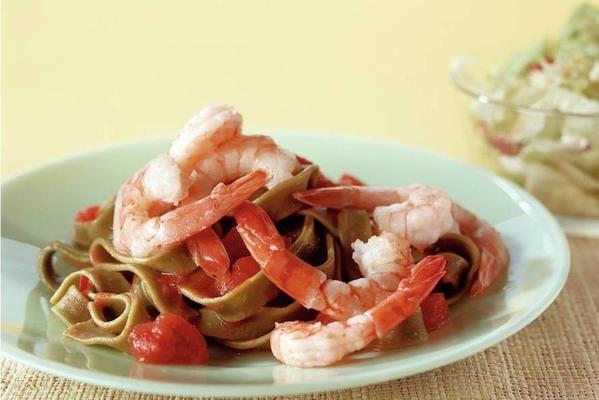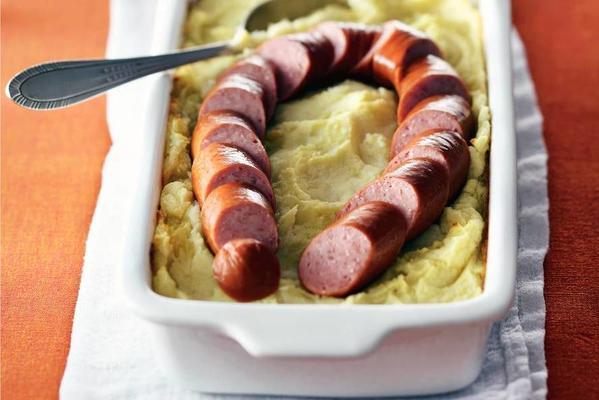Gluten special part 3: 10 Steps to a gluten-free diet
-
Click below to read Part 2: Gluten special part 2: a life without gluten
-
Switching to a gluten-free diet can be difficult at first. However, these 10 steps will make things a lot clearer and seem a little easier to do.
Step 1. Identify gluten-free foods at home
-
Many foods are naturally gluten-free. Before buying gluten-free bread and grains at an expensive store, check your kitchen and refrigerator to see if you already have the following:]
-
Many foods are naturally gluten-free. Before buying gluten-free bread and grains at an expensive store, check your own kitchen and refrigerator to see if you already have the following:]
-
 11 minMain dishpeanut oil, tofu stir-fry cubes finely seasoned, stir fry sauce sweet and sour, thick noodles, carrot julienne, beetroot julienne, yellow bell pepper, watercress,rainbow salad with tofu
11 minMain dishpeanut oil, tofu stir-fry cubes finely seasoned, stir fry sauce sweet and sour, thick noodles, carrot julienne, beetroot julienne, yellow bell pepper, watercress,rainbow salad with tofu -
 45 minMain dishRed cabbage, mild olive oil, quinoa plus, forest outing, lemon, sesame oil, soy sauce less salt, Bio Today tahini white in pot, tap water,grilled red cabbage with quinoa salad
45 minMain dishRed cabbage, mild olive oil, quinoa plus, forest outing, lemon, sesame oil, soy sauce less salt, Bio Today tahini white in pot, tap water,grilled red cabbage with quinoa salad -
 30 minDessertBrie, Roquefort, port salut, gruyere, Camembert, walnut, garlic, thyme, honey, grape, baguette, Red onion, red grape, raisins, Red wine, Red wine vinegar, Brown sugar,generous cheese plate with onion marmalade
30 minDessertBrie, Roquefort, port salut, gruyere, Camembert, walnut, garlic, thyme, honey, grape, baguette, Red onion, red grape, raisins, Red wine, Red wine vinegar, Brown sugar,generous cheese plate with onion marmalade -
 30 minDessertFull Milk, whipped cream, macaroon, custard powder, vanilla sugar, sugar, protein, amaretto, almond liqueur, basic recipe cooking pears,macaroon pastry with casserole
30 minDessertFull Milk, whipped cream, macaroon, custard powder, vanilla sugar, sugar, protein, amaretto, almond liqueur, basic recipe cooking pears,macaroon pastry with casserole
-
Step 2. Identify gluten-free packaged foods
-
Next, take all packaged foods with labels and place them on the kitchen table. Some packaged foods have gluten hidden in the ingredients. If you find out there are gluten is in the ingredients then you are not going to eat that food.
-
You can discard these gluten-containing foods or put them in a separate area for others to eat. We know that wheat ingredients are required to be clearly marked, but this means again not necessarily that the food is gluten free. A gluten-free label, on the other hand, means that it is a safe food to eat.
-
You can discard these gluten-containing foods or put them in a separate area for others to possibly eat. We know that wheat ingredients are required to be clearly marked, but this means again not necessarily that the food is gluten free. A gluten-free label, on the other hand, means that it is a safe food to eat.
-
 5 minDrink without alcoholbananas, cool fresh apple-pear raspberry juice, Soy drink vanilla,soy fruit shake
5 minDrink without alcoholbananas, cool fresh apple-pear raspberry juice, Soy drink vanilla,soy fruit shake -
 20 minMain dishsauerkraut, sticking potato, liquid baking product, half-to-half minced, Spice meatballs, pineapple, olive oil, liquid baking product,gratin sauerkraut dish with minced meat
20 minMain dishsauerkraut, sticking potato, liquid baking product, half-to-half minced, Spice meatballs, pineapple, olive oil, liquid baking product,gratin sauerkraut dish with minced meat -
 40 minMain dishlemongrass, fresh ginger, Red peppers, onions, tomato cubes, fresh cod fillet, coriander, oil, ground turmeric (koenjit), coconut milk, salt,fish in creamy coconut sauce
40 minMain dishlemongrass, fresh ginger, Red peppers, onions, tomato cubes, fresh cod fillet, coriander, oil, ground turmeric (koenjit), coconut milk, salt,fish in creamy coconut sauce -
 15 minSide dishsweet potato, soft goat cheese, egg, spring / forest onion,stuffed sweet potato with egg
15 minSide dishsweet potato, soft goat cheese, egg, spring / forest onion,stuffed sweet potato with egg
Step 3. Plan a week around naturally gluten-free foods
-
Not sure where to start? Try the following suggestions:
-
Lunches and dinner
-
Step 4. Make a gluten-free shopping list
-
 20 minMain dishTasty vine tomato, (olive oil, fresh basil, onion, garlic, Parmigiano Reggiano, zucchini spaghetti, pumpkin spaghetti, mini buffalo mozzarella,lukewarm pumpkin and zucchini spaghetti
20 minMain dishTasty vine tomato, (olive oil, fresh basil, onion, garlic, Parmigiano Reggiano, zucchini spaghetti, pumpkin spaghetti, mini buffalo mozzarella,lukewarm pumpkin and zucchini spaghetti -
 15 minSide dishtraditional olive oil, curry powder, wheat flour, coconut milk, sambal oelek, chicken broth tablet, water, fresh mango,curry sauce with mango
15 minSide dishtraditional olive oil, curry powder, wheat flour, coconut milk, sambal oelek, chicken broth tablet, water, fresh mango,curry sauce with mango -
 30 minMain dishtraditional olive oil, lean ground beef, frozen Mexican wok vegetables, salsa sauce mild, taco shell, grated young cheese, creme fraiche,Mexican vegetable in tacos
30 minMain dishtraditional olive oil, lean ground beef, frozen Mexican wok vegetables, salsa sauce mild, taco shell, grated young cheese, creme fraiche,Mexican vegetable in tacos -
 95 minMain dishmaize chicken, lemon, coarse sea salt, pepper, extra virgin olive oil, garlic, thyme, zucchini, tomatoes (small to), black olives without pit,provençal chicken with zucchini and tomatoes
95 minMain dishmaize chicken, lemon, coarse sea salt, pepper, extra virgin olive oil, garlic, thyme, zucchini, tomatoes (small to), black olives without pit,provençal chicken with zucchini and tomatoes
-
After you plan a week's menu, make a gluten-free shopping list for what you want to buy. When you write it down clearly, don't worry about taking something that might bother you eventually.
-
After you have planned a week's menu, make a gluten-free shopping list for what you want to buy. When you write it down clearly, don't worry about taking something that might bother you eventually.
Step 5. Read the labels carefully every time
-
Sometimes it happens that the ingredients of a product are changed. Therefore it is always a good idea to check the ingredients to see if there might be hidden gluten in it . It might take a little longer at first, but it will eventually get you faster.
-
Sometimes it happens that the ingredients of a product are changed. Therefore it is always a good idea to check the ingredients to see if there might be hidden gluten in it . It may take a little longer at first, but it will eventually get you faster.
-
 25 minSmall dishflour, frozen puff pastry, egg, milk, walnut, mature cheese, paprika, dried Provençal herbs,puff pastry-sticks
25 minSmall dishflour, frozen puff pastry, egg, milk, walnut, mature cheese, paprika, dried Provençal herbs,puff pastry-sticks -
 20 minSide dishEggs, lettuce, parsley, olive oil (extra virgin), tarragon vinegar, salt and freshly ground pepper,lettuce with egg dressing
20 minSide dishEggs, lettuce, parsley, olive oil (extra virgin), tarragon vinegar, salt and freshly ground pepper,lettuce with egg dressing -
 15 minSmall dishbaking flour, peanut oil, flat leaf parsley,ar'nabit mi'li
15 minSmall dishbaking flour, peanut oil, flat leaf parsley,ar'nabit mi'li -
 15 minAppetizerScottish salmon fillet, butter or margarine, fresh dill, creme fraiche, dry white wine, arugula lettuce melange, pan tostado,baked salmon with white-wine sauce
15 minAppetizerScottish salmon fillet, butter or margarine, fresh dill, creme fraiche, dry white wine, arugula lettuce melange, pan tostado,baked salmon with white-wine sauce
Step 6. Avoid cross-contamination
-
If you also shop and prepare food for people who do eat gluten-containing foods, it is extra important to make sure you protect your gluten-free products from contact with gluten. The following tips will help you avoid cross-contamination as much as possible.
-
If you're also shopping and preparing food for people who do eat gluten-containing foods, it's extra important to make sure you protect your gluten-free products from contact with gluten. The following tips will help you avoid cross-contamination as much as possible.
-
Step 7. Eat outside without any problems
-
Some people think that gluten intolerance means they will never be able to eat in a restaurant again. That is of course not true, but pay attention to cross-contamination when you eat out. This can drastically reduce risks with gluten.
-
Always ask how the food is prepared. Talk to the manager or chef if the waiter does not answer this. Some specific questions are for example:
-
Always ask how the food is prepared. Talk to the manager or chef if the waiter does not answer this. Some specific questions are, for example:
-
Step 8. Eat a balanced diet
-
People with celiac disease often do not get enough calcium, vitamin D, iron, B vitamins, or fiber on a gluten-free diet. For example, many gluten-free breads, cereals, and pasta are not fortified with vitamins and may be low in fiber. Are you getting enough nutrients from your diet? If not, it is a good idea to look at the following foods and see if you could possibly eat them. These foods contain a great many different substances.
-
People with celiac disease often do not get enough calcium, vitamin D, iron, B vitamins, or fiber on a gluten-free diet. For example, many gluten-free breads, cereals, and pasta are not enriched with vitamins and may be low in fiber. Are you getting enough nutrients from your diet? If not, it is a good idea to look at the following foods and see if you could possibly eat them. These foods contain many different substances.
-
 25 minMain dishbalsamic vinegar, garlic, steak, Spaghetti, traditional olive oil, fresh green olive tapenade, arugula, Parmigiano Reggiano,spaghetti with steak and arugula
25 minMain dishbalsamic vinegar, garlic, steak, Spaghetti, traditional olive oil, fresh green olive tapenade, arugula, Parmigiano Reggiano,spaghetti with steak and arugula -
 15 minAppetizerfennel bulb, arugula, red pointed pepper, black agnus carpaccio (a 100 grams), capers,black angus carpaccio with fennel
15 minAppetizerfennel bulb, arugula, red pointed pepper, black agnus carpaccio (a 100 grams), capers,black angus carpaccio with fennel -
 35 minMain dishsweet potatoes, salad onion, garlic, cooking dairy, grated cheese for vegetable gratin, almond shavings, peanut oil, breaded schnitzels, Broccoli,crispy schnitzel with sweet potato gratin and broccoli
35 minMain dishsweet potatoes, salad onion, garlic, cooking dairy, grated cheese for vegetable gratin, almond shavings, peanut oil, breaded schnitzels, Broccoli,crispy schnitzel with sweet potato gratin and broccoli -
 30 minMain disholive oil, onion, tomato, risotto rice, laurel leaf, thyme, saffron, turmeric, fish stock of 1 tablet, mixed seafood, mixed whitefish fillet, mussel, lemon,fish paella from the oven
30 minMain disholive oil, onion, tomato, risotto rice, laurel leaf, thyme, saffron, turmeric, fish stock of 1 tablet, mixed seafood, mixed whitefish fillet, mussel, lemon,fish paella from the oven
-
Step 9. Identify any additional food intolerances
-
If you don't feel better on a gluten-free diet, you may have other food intolerances such as lactose (milk sugar), cow's milk, soy, corn, eggs, nuts, yeast and acidic foods. Talk to your doctor and / or dietitian if you don't feel better on a gluten-free diet.
Step 10. Get Support
-
For a successful transition to the gluten-free lifestyle, you must have the support of your doctor, dietitian, family, friends, and other people with celiac disease.
-
Joining a local celiac support group can be very helpful. These people understand what you're going through, probably better than anyone else. They will be able to provide emotional support and answer any questions you may have left.
-
 15 minMain dishgreen tagliatelle, garlic, Red pepper, olive oil, tomato cubes, cocktail shrimp, mixed salad, vinaigrette,spicy tagliatelle with shrimps
15 minMain dishgreen tagliatelle, garlic, Red pepper, olive oil, tomato cubes, cocktail shrimp, mixed salad, vinaigrette,spicy tagliatelle with shrimps -
 50 minMain dishsomething crumbly potatoes, sauerkraut natural, tomato paste, sambal oelek, bacon, semi-skimmed milk, unsalted butter, Gelderse smoked sausage,Sauerkraut with smoked sausage
50 minMain dishsomething crumbly potatoes, sauerkraut natural, tomato paste, sambal oelek, bacon, semi-skimmed milk, unsalted butter, Gelderse smoked sausage,Sauerkraut with smoked sausage -
 20 minBreakfastrucola lettuce, bunch onion, roasted red peppers in pot, traditional olive oil, medium sized egg, fresh cream, grated mature cheese, butter,creamy cheese omelet with arugula
20 minBreakfastrucola lettuce, bunch onion, roasted red peppers in pot, traditional olive oil, medium sized egg, fresh cream, grated mature cheese, butter,creamy cheese omelet with arugula -
 25 minMain dishceleriac, floury potatoes, olive oil, beef finches, onion, Apple juice, gravy natural, dairy spread,beeffinch with sweet apple gravy
25 minMain dishceleriac, floury potatoes, olive oil, beef finches, onion, Apple juice, gravy natural, dairy spread,beeffinch with sweet apple gravy
-
Click below to read Part 4: Gluten special part 4: The top 10 biggest benefits of gluten-free eating